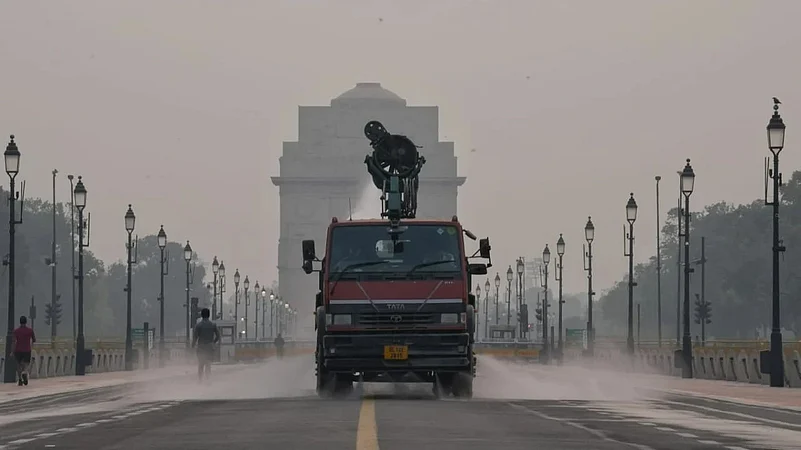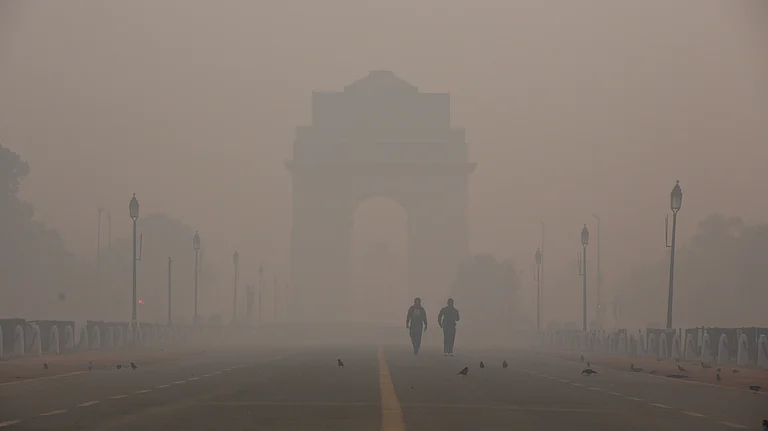
Ethiopia’s Hayli Gubbi volcano has erupted after nearly 12,000 years, sending ash plumes across the Red Sea and towards India.
The ash cloud is expected to pass over Gujarat, Rajasthan, Delhi-NCR, and parts of North India, though IMD says its impact on Delhi’s already “very poor” AQI remains uncertain.
Flights have been cancelled or diverted as unusually dark, hazy skies disrupt air traffic across multiple airlines.
Ethiopia’s Hayli Gubbi volcano has erupted for the first time in nearly 12,000 years, and its ash plumes are now travelling thousands of kilometres, reaching India at altitudes between 25,000 and 45,000 feet. The national capital Delhi, cities in Rajasthan, and several parts of North India are expected to be affected by the massive cloud of volcanic ash, which is moving at nearly 100–120 km/hour and contains sulphur dioxide along with tiny particles of glass and rock.
Hayli Gubbi, located in the Erta Ale Range, erupted on Sunday, spewing towering ash clouds that drifted across the Red Sea toward Oman and Yemen. Scientists say the eruption marks one of the most extraordinary volcanic awakenings in the region’s recorded history. Its sudden activity in a remote, poorly studied volcanic zone has drawn global scientific attention.
Will Hayli Gubbi Choke Delhi’s Air Quality?
At 7 am on Tuesday, the Air Quality Index (AQI) in Delhi stood at 363, falling under the “very poor” category. India Meteorological Department (IMD) Director General Mrutyunjay Mohapatra said the plume is unlikely to significantly worsen the AQI because it is travelling at very high altitudes. However, the exact impact on pollution remains “unclear,” Mohapatra said. He noted that the ash cloud, currently “nearing Gujarat,” may begin influencing “Delhi-NCR and neighbouring northern India in the next few hours,” though its primary impact will be on aviation.
Ash Cloud Hovering Over India
The ash plumes from Ethiopia are expected to enter parts of western India on Tuesday evening, according to a report by The Economic Times. “The ash cloud is about to enter Gujarat (west side) and move towards Rajasthan, northwest Maharashtra, Delhi, Haryana, and Punjab by 10 pm, and later impact the Himalayas and other regions,” the report said, citing IndiaMetSky Weather. Media reports also quoted Mohapatra as saying the ash clouds will likely drift towards China and clear Indian skies by around 7:30 pm. “High-level winds carried the ash cloud from Ethiopia across the Red Sea to Yemen and Oman and further over the Arabian Sea towards western and northern India,” the IMD said in a statement.
Flights Cancelled Amid Darkened Skies
Several flights in India have been cancelled or diverted as ash-darkened skies create hazardous flying conditions. IndiaMetSky Weather earlier warned that the plume would make the skies unusually dark and hazy, potentially disrupting air traffic with delays and longer travel times. Airlines including Akasa Air, IndiGo, Air India, and several international carriers have either cancelled or diverted flights due to unsafe conditions at higher altitudes.

























